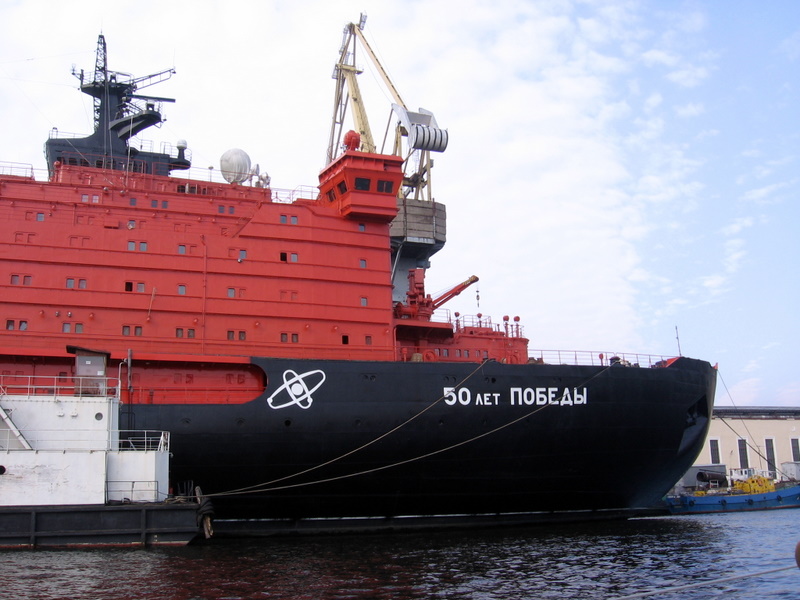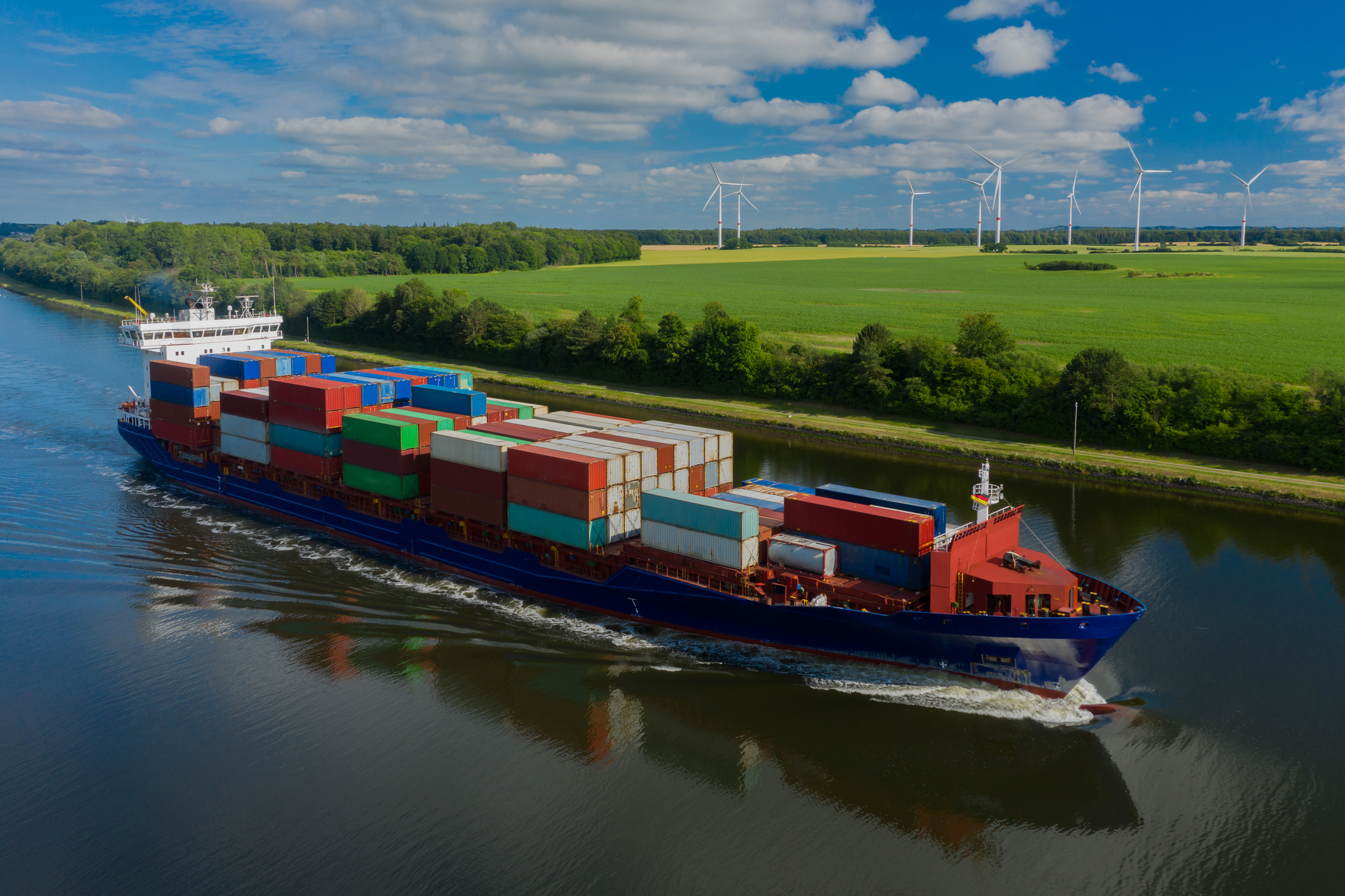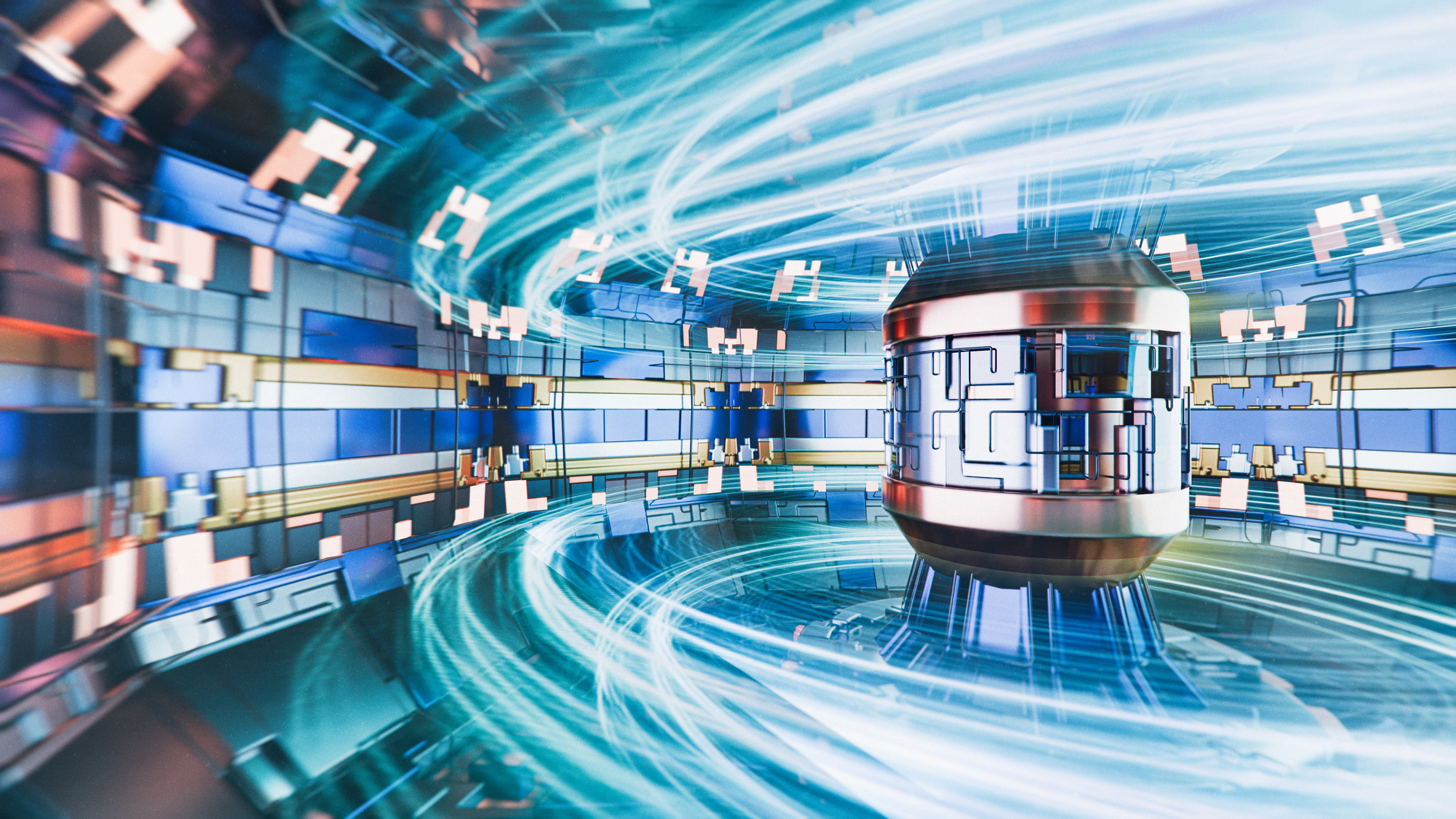What is Nuclear Marine Propulsion?
Nuclear marine propulsion refers to the use of nuclear power to generate heat and electricity to power a ship. It uses small-scale nuclear reactors to sustain controlled nuclear fission reactions that generate heat. The heat generates steam, which in turn powers turbines. The turbines are then used to power main engines, generators, and other auxiliary machinery onboard.
The use of nuclear power has been common in military applications with many warships, submarines and aircraft carriers using molten-salt reactor cores. Security and safety risks, however, have prevented its use in the commercial shipping industry. Let’s start by understanding how the merchant shipping industry could benefit from nuclear propulsion.

CC BY-SA 2.0, via Wikimedia Commons
Advantages of nuclear propulsion
Nuclear propulsion has a negative image in the minds of the public. But it can offer benefits that no other energy source can currently compete with. Let us take a look at some of these advantages.
Clean Source of Energy
Nuclear power is an extremely clean source of energy. It produces little to no gas pollutants. This makes it a very desirable alternative to diesel engines that produce several hundred tonnes of pollutants in every voyage. Nuclear power has the potential to solve the global climate crisis as studies show that it can reduce CO2 emissions by 98 percent compared to conventional fossil fuels. It also eliminates SOx, NOx, and PM from the energy generation process.

Lower weight
The nuclear power generation machinery has considerable weight. The shield around the reactor core makes up most of the weight. However, it is lighter than the conventional marine diesel engine setup. Thus, for every KW produced, less energy is spent on propelling the dead weight of the ship. This allows us to increase cargo capacity and improve the operational efficiency of a ship.
The fuel for a nuclear plant is also stored in the reactor itself. Thus, the fuel storage doesn’t require additional space.
High design speeds
The use of nuclear propulsion enables us to design for higher operational speeds as the fuel cost increases only marginally with higher speeds. The ultimate limiting factor in the case of nuclear reactors is the power rating as it determines the capital expenditure.
Fewer refueling stops
One of the underrated advantages of a nuclear power-based system is that the duration between refueling can be considerably longer than traditional engines. This can be useful in larger vessels such as VLCCs and ULCCs that rarely visit ports.
Feasible operation
Research has shown that nuclear power plants for merchant ships are feasible and show a lot of promise [1]. The capital expenditure can be very high for nuclear reactors. However, this expense can be recovered within five to fifteen years depending on the fuel cost and the vessel’s operational pattern.
Limitations of nuclear propulsion
While nuclear propulsion provides massive advantages in several ways, it also has some concerns. In this section, we look at the factors preventing the widescale application of nuclear power in the merchant fleet.
Security and Safety Concerns
Nuclear energy has been used in military ships and submarines for a long time. But their use in commercial ships exposes civilian life and infrastructure to unprecedented risk. Even though the current technology makes it very unlikely that a meltdown would occur, controls need to be put in place to prevent nuclear accidents due to grounding, impact, collision, machinery damage, fire, explosion, and other causes.
Complicated monitoring
There’s no doubt that nuclear technology is an advanced and complicated science. Merchant ships are manned by civilian engineers with no background in nuclear energy. Thus, the operational dynamic of the nuclear propulsion plant is complicated by the complex design features and ship architecture.

Risk of nuclear leakage
While doing away with fossil fuels eliminates the risk of oil spills and pollution, the use of nuclear power presents new types of risks. The risk of nuclear leakage, and subsequent damage to persons, property and the environment could be much worse than oil pollution. Although the risk of a meltdown in the reactors proposed for commercial shipping is close to zero, controls still need to be built in place to ensure that nuclear leakage incidents do not occur.
Social political risks
Nuclear marine propulsion carries the risk of public opposition and other social-political risks when wide-scale implementation begins. Public education and awareness are crucial to ensure understanding that modern nuclear propulsion is a safe and reliable method of energy generation.
At the same time, regulations are needed to mitigate navigation safety and marine accident risks due to nuclear propulsion systems.

High Capital Expenditure
The high capital expenditure associated with nuclear propulsion systems can be a deterrent to its widespread use. Fears associated with fuel availability can exacerbate this situation. It is therefore important to make the technology more affordable and the fuel more available to encourage the interest of the merchant fleet in nuclear propulsion for ships.
Conclusion
Presently, about 200 ships are using nuclear marine propulsion plant technologies. The most popular ship types that use these technologies are icebreakers, submarines, and aircraft carriers.
However, the shift towards sustainability has led to a rising interest in nuclear propulsion for commercial ships. Using it would allow ships to operate more responsibly concerning the environment. The UK in 2021 invited inputs from the industry regarding the use of nuclear power for merchant ships.
Many shipping companies are also actively researching the commercialization of molten salt reactors through partnerships with research institutes. We could see the construction of nuclear ships as early as 2030.
However, like every other energy source, reliable safety measures must be put in place and the technology must evolve further before it is mature enough to be used widely. There is, however, no doubt that nuclear energy has significant potential and we expect to see a lot more progress in the next decade.
References
[1] 22. Adumene S., Islam R., Amin M.T., Nitonye S., Yazdi M., Johnson K.T. Advances in nuclear power system design and fault-based condition monitoring towards safety of nuclear-powered ships. Ocean Eng. 2022;251:111156:1–111156:10. doi: 10.1016/j.oceaneng.2022.111156.

Leave a Reply